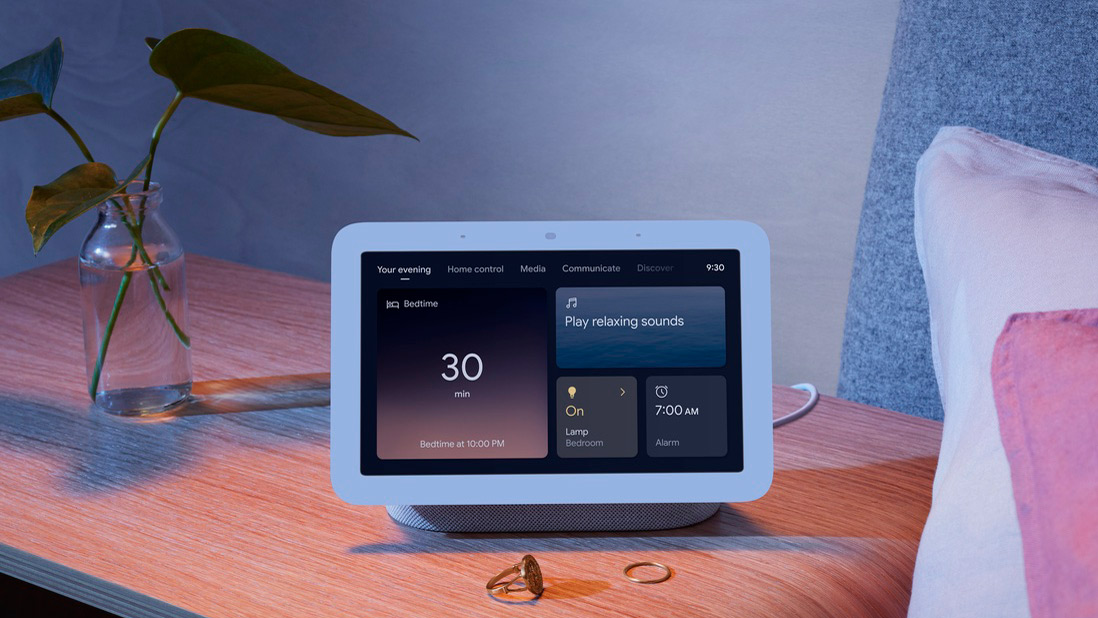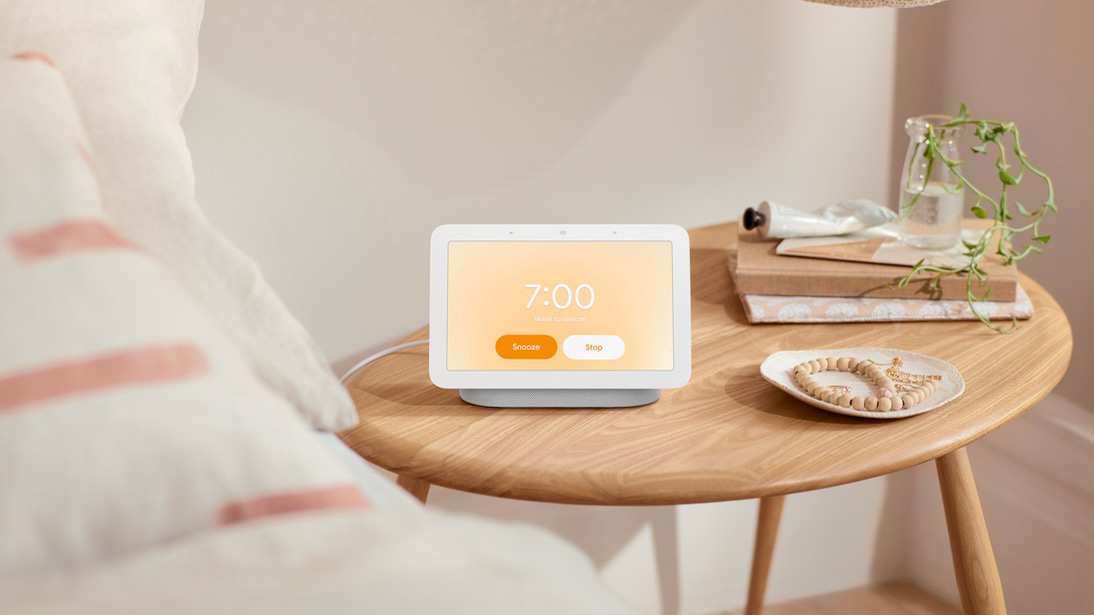Google Nest Hub 2 with sleep tracking available for pre-order now
Google’s newest smart display is almost here

The much-rumored Google Nest Hub 2, which can track your sleep, has finally been unveiled and will be released in the US, UK and Australia on March 31. It’s available to pre-order today, March 16, and costs $99.99 / £89 / AU$149.
The second generation of Google’s smallest smart display, the Google Home Hub, has Soli radar technology built-in, which can already be found in the Google Pixel 4 smartphone and Google’s newest Nest smart thermostat, to power its Motion Sensing feature. Motion Sensing is used to analyze your sleep, called Sleep Sensing, but also to enable Quick Gestures, so you control music and video playback simply by moving your hand in front of the 7-inch smart display, even though it doesn’t have a built-in camera.
To use the Sleep Sensing feature on Google Nest Hub 2, position the smart display near your bed, angling it towards your torso. During the night, the smart display will monitor your breathing and movement, while the built-in microphones, and ambient light and temperature sensors will detect coughing, snoring, or light and temperature changes in your bedroom. All of this information is analyzed by the device to help you understand what’s impacting your sleep.
- Check out the best smart displays
- Not sure which smart display to go for? Read our Google Nest Hub Max vs Amazon Echo Show comparison
- Find out about all the new games the Google Home Hub Max update added
Personalized sleep report
Each morning, the Google Nest Hub 2 will display a Sleep Sensing report detailing how well you slept the previous night, but you can also ask Google at any time to see your sleep data, as well as asking questions like “Hey Google, when should I go to bed? and” “Hey Google, did I snore last night?”. The data can also be shared with the Google Fit app so you can get sleep tracking information alongside other health data on your smartphone.
Following 14 days of analyzing your sleep, Sleep Sensing can then offer up suggestions on how to amend your bedtime schedule to suit your personal body clock, along with other personalized suggestions to improve your sleep.
Sleep Sensing is available as a free preview on any Google Nest Hub 2 until 2022, although Google didn’t offer a more specific end date, or details of any costs associated with Sleep Sensing after this date.
Other handy bedtime features
The Google Nest Hub 2 has a number of other handy features, which make it a useful device for the bedroom. There’s a Sunrise Alarm setting that will gradually brighten the display before your alarm goes off, waking you up more gently, while Quick Gestures means you can snooze the alarm simply by waving your hand in front of the display.
Sign up for breaking news, reviews, opinion, top tech deals, and more.
At bedtime, the display will dim automatically as the evening draws to a close so it won’t disturb your sleep, and the Your Evening screen makes it easy to set alarms and control smart lights so your bedroom is the perfect environment for a good night’s sleep. These features are also being added to the original Google Nest Hub and Google Nest Hub Max through a software update too.

Privacy
Google has considered privacy when it comes to the Google Nest Hub 2 as well. The Motion Sense technology can’t detect specific bodies or faces, just motion in general, and all of the sleep data analysis takes place on the device, nothing is stored in the cloud or sent to Google servers and the tech giant confirmed the information would not be used to serve up personalized adverts either.
You can pause sleep tracking or disable it completely at any point through the menus on screen, while also asking Google to delete your sleep sensing data too.
Even more upgrades
It’s not just sleep tracking that’s new to the Google Nest Hub 2. Google has improved the speaker and claims it now offers 50% more bass than the previous Google Nest Hub. It’s also added an extra microphone so there’s now three microphones that can identify when you’re calling for Google Assistant.
The Google Nest Hub 2 also supports Thread - a wireless protocol for smart home gadgets
That’s similar to Zigbee and Z-wave, but offers a more reliable, faster connection and uses less power. As well as supporting the technology, the Google Nest Hub 2 can act as a Thread Border router so the different devices can talk to each other. The HomePod Mini is currently the only other widely-available smart home device that offers this functionality.
Eco-friendly design
The Google Nest Hub 2 comes in four colors; chalk, charcoal, sand and mist - a soft pastel blue which Google said was designed to give a calming presence in the bedroom. Just like the Google Nest Mini 2, the smart display is made from 54% recycled post consumer plastic and is covered in fabric made from recycled plastic bottles.

The best smart display yet?
The Google Nest Hub 2 has some handy sleep tracking features that may appeal to those that don’t have an activity tracker or smart watch, or prefer not to wear one when sleeping. While the idea of a screen in the bedroom may seem counter intuitive to getting a good night’s sleep, after all we're often advised to keep screens out of the bedroom, Google believes it’s less of a disturbance than a smartphone or tablet, as it doesn’t provide access to calls, messages and emails unlike phones and tablet.
However, we’re disappointed that the Google Nest Hub 2 doesn’t have a camera, as there’s no video calling option which is something Amazon’s rival smart display offer.

Carrie-Ann Skinner was formerly Homes Editor at TechRadar, and has more than two decades of experience in both online and print journalism, with 13 years of that spent covering all-things tech. Carrie specializes in smart home devices such as smart plugs and smart lights, as well as large and small appliances including vacuum cleaners, air fryers, stand mixers, and coffee machines. Carrie is now a copy editor at PWC.